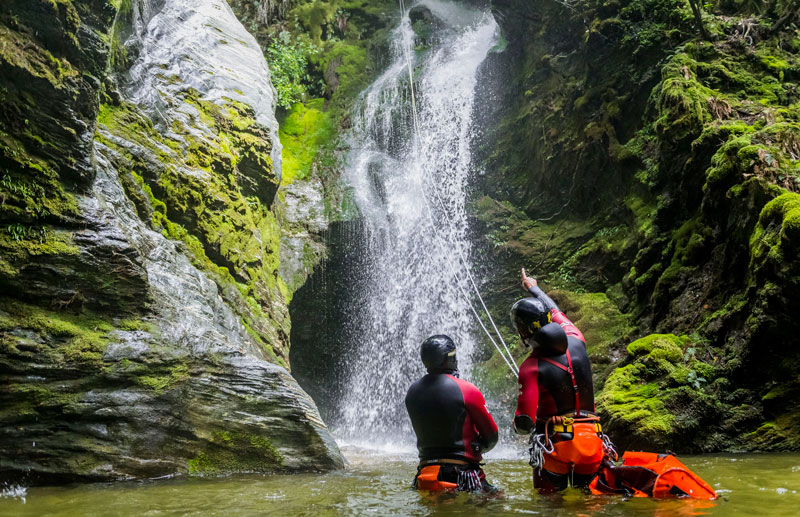Canyoning rating systems explained
In this article we will compare the main rating systems used by the international canyoning community. Understanding these ratings will help us identify a suitable descent for our group.
American canyoneering rating system
In the United States, canyons are typically rated using a letter-based system, with “A” being the easiest and “D” being the most difficult. The American rating system is based on several factors, including the technical difficulty of the rappelling and climbing, the potential for danger, and the overall physical difficulty of the hike. For example, a canyon rated as “A” may have some simple rappelling and climbing, with a relatively easy hike, while a canyon rated as “D” may have complex and challenging rappelling and climbing, with a very physically demanding hike.

French canyoning rating system
The French rating system, on the other hand, is based on a numerical scale, with 1 being the easiest and 6 being the most difficult. The French system takes into account the same factors as the American system, but also includes additional considerations such as the length of the canyon and the amount of water present. A canyon rated as a 1 in the French system may be relatively short and have minimal water, while a canyon rated as a 6 may be much longer and have more challenging rappelling and climbing, as well as a higher volume of water.
Main differences between canyoning rating systems
Lenght
One major difference between the two systems is that the American system does not take into account the length of the canyon, while the French system does. This can make it more difficult to compare canyons between the two systems, as a shorter canyon in the United States may be rated as more difficult due to the technical difficulty of the rappelling and climbing, while a longer canyon in France may be rated as less difficult due to its length and lower overall difficulty.
Difficulty
Another difference is that the French system includes an additional category, known as “PD,” which stands for “Peu Difficile” or “Not Difficult.” This category is used for canyons that are relatively easy, but still require some technical skills, such as basic rappelling and climbing. The American system does not have a similar category, and all canyons are rated based on their overall difficulty.
Subjectivity
It’s important to note that both the American and French rating systems are subjective, and the ratings of a particular canyon can vary depending on who is rating it. As such, it’s always a good idea to do your own research and be prepared for the challenges that a canyon may present, regardless of its rating.
In summary
Overall, the main difference between the American and French canyoning rating systems is the way in which they categorize the difficulty of a canyon. While both systems consider the technical difficulty of the rappelling and climbing, as well as the potential for danger, the American system is based on a letter-based system and does not take into account the length of the canyon, while the French system uses a numerical scale and includes the length of the canyon as a factor in its rating. As such, it’s important to be familiar with both systems and understand the differences between them when planning a canyoneering trip.



